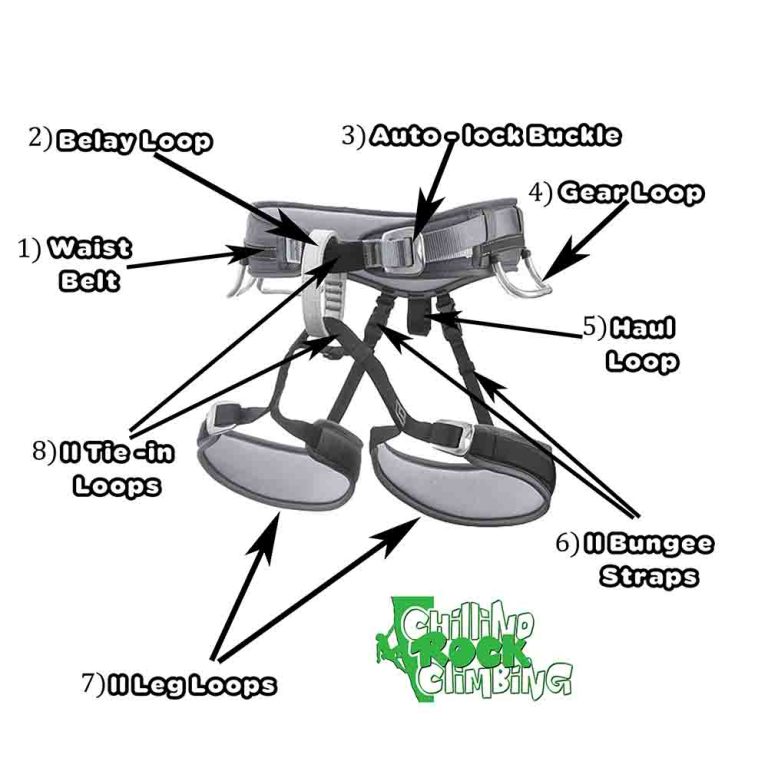Harness
Features and Functions:
1.Waist Belt:
2.Belay Loop:
3. Auto-lock Buckle
4. Gear Loop
Gear loops are for equipment storage only! They are sewn along the waist belt and standard harnesses usually have at least 4 of them. The more gear you plan to carry the bigger you want your gear loops to be. Some big wall-type harnesses even have up to 8 gear loops that provide enough space for an extensive amount of gear. In very few cases, gear loops are rated for bodyweight usage in order to avoid fatal accidents with ignorant climbers who mistaken it with the belay loop or tie-in loops. GEAR ONLY!
5. Haul Loop
6. Bungee Straps
Bungee straps are very functional and increase the comfort level of the harness. Their primary function is to keep the leg loops from sagging down. With most harnesses they are adjustable. Climber’s want their bungee strap to be just before tight when they fully lift up their leg. Bungee straps are non-weight bearing parts of the harness.




7. Leg Loops
The two major functions are:
8. Two Tie-in Loops
This is where the climber/harness is attached to all nylon/polyester climbing material such as, ropes and slings. With most harnesses both nooses are reinforced through extra webbing or plastic pieces which are minimizing wear and tear through nylon friction that is created during tie in’s and off’s.
Most important things to know about harnesses:
- Hip belt, leg loops, carabineer/belay loop and leg loops/hip belt nooses are always full strength features of any harness
- Distinguish between auto-locking and double back-up buckle and know how both systems lock in
- Only clip metal gear (carabineers) to your carabineer/belay loop
- Use your hip belt and leg loops nooses for tying in with your ropes or slings (nylon material)
